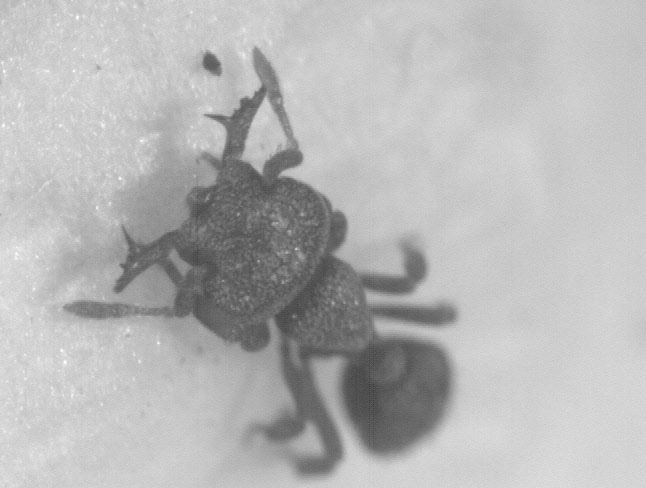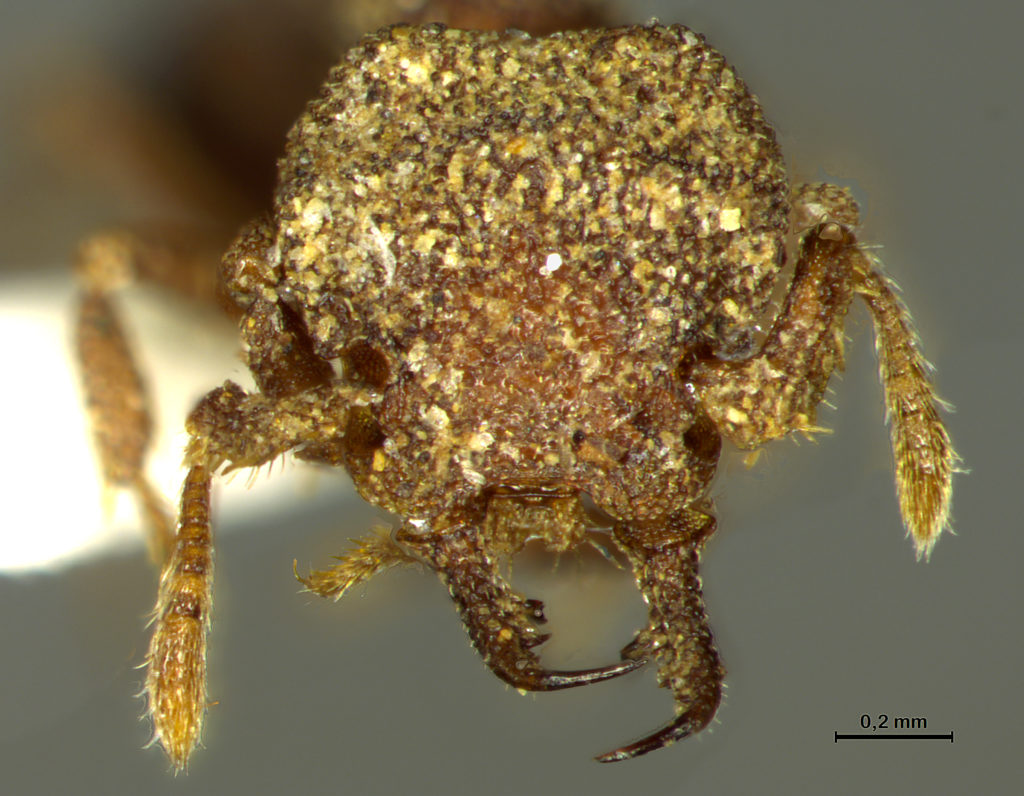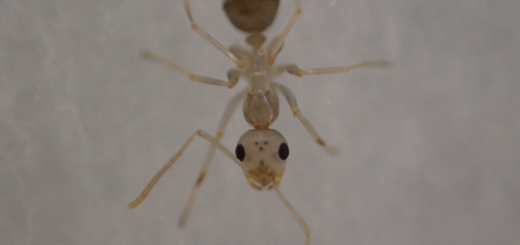The making of the Protalaridris revision
In the recently published paper “Ants of the genus Protalaridris (Hymenoptera: Formicidae), more than just deadly mandibles” in European Journal of Entomology, the authors John E. Lattke, Thibaut Delsinne, Gary D. Alpert, and Roberto J. Guerrero revise the genus Protalaridris and describe six new species. Observations suggest that they are sit-and-wait ambush predators. This genus can be found in Panama, Venezuela, and along the Andes to Peru. In this photoblog, John E. Lattke and Roberto J. Guerrero let us look behind the scenes of working on the Protalaridris revision.
A Photoblog compiled by John E. Lattke and Roberto J. Guerrero
Even though this revision deals with a small genus, it is perhaps one of the most significant publications I (John E. Lattke) have ever produced, from a very personal view. Beyond its academic merits or pitfalls, it parallels and represents a series of great changes in my personal and academic life that range from being a student to being tenured staff, and the decision to become an expat.
It all started with a single Protalaridris gyne given to me when I was just a freshman in the Ag School of the Universidad Central de Venezuela in the city of Maracay. The ant was collected in the fabulous cloud forests close to the Rancho Grande research station in the Coastal Mountains of Venezuela. Their exceptional biodiversity, accessible via just a short drive from three major cities, made it a popular place amongst field biologists since the 1930s, beginning with the famed William Beebe.

Rancho Grande. (© John Lattke)
Upon receiving the ant, I mistakenly identified it as Protalaridris armata and eventually published it as a new genus record for Venezuela. Time passed, I was able to become a professional entomologist, and the allure of Rancho Grande and the surrounding mountains just grew. During one particular study in 2007, my students and I managed to collect several of these ants from leaf-litter and soil samples. It became apparent that we had two species living in the same forest and neither was P. armata. The idea of revising the genus hatched, and I started writing the descriptions of these species and other specimens found in different collections. Unfortunately, my work did not proceed as smoothly as hoped for in this front, and in many others, as the deteriorating situation in Venezuela was making it progressively more challenging to live a “normal life”. Different events eventually forced my decision to leave the country and explore more favorable environments. I took up residence in Reserva Madrigal, near the southern Ecuadorian town of Loja.
I started to teach and to do research at a local public university. Loja is surrounded by astounding landscapes with a rich but poorly known biological diversity, including ants. My eldest daughter attended a school tucked away some 2300 m above sea level in the mountains next to a paramo with spectacled bears. It was previously a dairy farm but has since become a private reserve, and the pastures are giving way to forests. Hikes in these woods permitted me to collected gorgeous Neoponera typical of montane habitats and Cheliomyrmex workers tunnelling in the soil. Obviously, the site was begging for fieldwork, and so it began with a group of undergraduate students from the Universidad Nacional de Loja. An abandoned pigsty became our place for hanging mini-Winkler extractors, and it was in one of our litter samples that we found specimens of another undescribed species of Protalaridris.

Hanging mini-Winkler extractors. (© John Lattke)

Protalaridris loxanensis with open mandibles. (© John Lattke)
Additional collecting permitted the capture of a single live specimen of P. loxanensis. This specimen was observed for some days and permitted me to garner some information on its behavior. During this time, I built a community of collaborators that contributed to making the final product. Thibaut Delsinne was living in Loja at that time, and Gary Alpert helped with specimens in the MCZ (Museum of Comparative Zoology at Harvard). Thibaut had collected in the forests near Loja not only P. loxanensis but also a short-mandibulate Basiceros-group ant that had some Protalaridris characters, but the mandibles were completely different. At this time, we started to communicate with Jack Longino and Michael Branstetter, both working on the phylogeny of Basiceros-group genera, and their UCE (ultraconserved elements) evidence convinced us that this ant was indeed a Protalaridis. Ensuing discussions on the possible evolutionary pathways of short-mandibulate to long-mandibulate, or vice-versa, lead to the insight of relating elongate Protalaridris mandibles with those of Harpegnathos and the extinct haidomyrmecines. Despite the seduction of the Andes, the opportunity to relocate to the southern Brazilian city of Curitiba proved too much, and it is here, where the final additions to this manuscript were made by Roberto Guerrero.
I (Roberto J. Guerrero) have known John Lattke for a good while, crossing paths in different parts of South America, but we never were able to actively collaborate on a paper. When John invited me to participate in the work with Protalaridris, it was an unexpected thing for me, but I saw it as a great opportunity. Before the invitation, there is a story, which tells how we collected the second (new!) species of Protalaridris in Colombia:
In May 2017, I invited Jack Longino and Fernando Fernández to my laboratory, in the Caribbean seaside city of Santa Marta, to coordinate a workshop on the taxonomy of Pheidole, with support from the Universidad del Magdalena. On one occasion, Jack, Fernando, and I, along with four undergraduate students from my lab, went for two days to a cloud forest in Vista Nieve, a site near Minca in the snow-capped Sierra Nevada de Santa Marta to collect Pheidole for lab work. Our expedition was an amazing adventure that permitted us to collect several genera of ants. Some of the most memorable ants were Procryptocerus, two colonies of a Tapinoma species similar to T. litorale (with many workers, males, and queens), Apterostigma, and some very dark Wasmannia. Oh yes, we also collected Pheidole!

In the forest. (© Roberto J. Guerrero)

The field team, from left to right: Roberto J. Guerrero, Jack Longino, and Fernando Fernández. (© Roberto J. Guerrero)
I sifted several square meters of leaf litter from both the forest floor and some that had accumulated at the base of large trees. After letting the mini-Winkler do its magic, Jack examined the contents and separated all the ants, and among those ants were three workers of a species of Protalaridris. When John heard about the discovery of more specimens of Protalaridris in the Sierra Nevada, he wrote to me saying there was already a specimen of that genus, known for that same area, which was an undescribed species. We compared information, and I mounted a specimen, imaged it, and later measured and described what would be the holotype. I collaborated closely with John in his efforts to try and standardize the species descriptions by different authors. My only regret was not obtaining data on the behavior or biology of this species that we have named Protalaridris arhuaca.

Protalaridris arhuaca holotype, lateral view. (© Roberto J. Guerrero)

Protalaridris arhuaca holotype head. (© Roberto J. Guerrero)
The rainforest P. arhuaca inhabits is relatively dense, with some clearings and paths that cross into the forest. I have since returned to the type locality with the hope of collecting males, queens, and more specimens of P. arhuaca, but these ants have been very elusive so far. With some luck, we will be hearing more about these ants in the future.

Panoramic view of the habitat of P. arhuaca. © Roberto J. Guerrero







But a very beautiful revision… https://www.eje.cz/pdfs/eje/2018/01/27.pdf